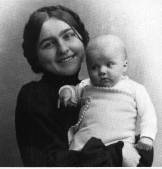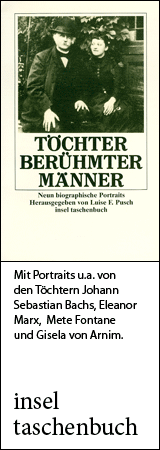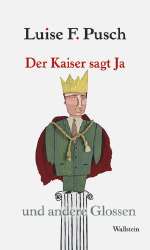
born on September 17, 1883 in Breslau, the German Empire (today: Wrocław, Poland)
died on July 19, 1968 in Murnau, West Germany
German craftswoman
Biography • Quotes • Literature & Sources
Biography
“I won't buy you any dolls. I think they're hideous. Make your own.” This was sculptor Max Kruse's response to Käthe's request that he buy their eldest daughter a doll. He was living in Berlin at the time, while she remained in the Lebensreform artists' colony on Monte Verità above Ascona and looked after the children; Max thought the big city was terrible for children. The fact that the separation was painful for his wife was of little importance. However, his apodictic rules, which Käthe always interpreted lovingly, gave her a freedom that was unusual for married women at the time. She enjoyed considerable independence and his refusal to buy a doll was the initial spark for her doll-making.
A sand-filled towel with a potato head became a beloved bambina for her daughter Maria and inspired Käthe to try again with plaster and sawdust. The filling soon trickled out of “Oskar's” fabric body and Max, who was visiting at the time, was so annoyed that he demanded the removal of the doll with the words “me or Oskar.” Käthe had in the meantime become enthusiastic about her new task, and a replacement for Oskar was easily found. She experimented with growing success and soon all her friends wanted her to make dolls for them. Shortly thereafter she participated in the exhibition “Spielzeug aus eigener Hand” (Handmade Toys) – to her own amazement, she was an immediate sensation.
The growing number of orders – even from America – meant that the apartments they had moved into in Berlin and Potsdam were constantly littered with materials, with seven children now running around and Max ranting and raving about the mess. Käthe therefore set up a factory in Bad Kösen. As the owner, she was committed to the highest standards of production, and she also treated her employees well. Max made a valuable contribution by modeling the heads of their children for Käthe to use as templates for the dolls’ heads. When companies tried to sell copies of her dolls, Käthe successfully defended her copyright.
In 1937, she took part in the World's Fair in Paris. During World War II, foreign trade stagnated and material procurement became a problem. After the war, two of Käthe's sons founded new workshops in West Germany while strictly adhering to the existing designs and the principle of handcrafting. Käthe retired from the business due to her age, but her dolls have remained expensive, sought-after collector's items to this day.
(Text from 2008; translated with DeepL.com; edited by Ramona Fararo, 2025. Please consult the German version for additional information, pictures, sources, videos, and bibliography.)
Author: Mechthild Winkler-Jordan
Quotes
Mimerle was happy and adored her bambina. – And I immediately saw what she loved about it and why: it was so wonderfully heavy! She had something to carry around. (Käthe Kruse about her first homemade doll)
Literature & Sources
Dahl, Thomas. 2005. Käthe Kruse Puppen. Katalog und Preisführer. Wohlfarth, Duisburg.
Kruse, Käthe. 1982 (1951). Ich und meine Puppen. Freiburg im Br. Herderbücherei 934. ISBN 3451079348
Kruse, Max. 2000. Die versunkene Zeit - Bilder einer Kindheit im Käthe Kruse Haus (1921-1933). BoD, Norderstedt.
Kruse, Max. 2000. Die behütete Zeit - eine Jugend im Käthe Kruse Haus (1933-1945). BoD, Norderstedt.
Kruse, Max. 1996. Die verwandelte Zeit - Der Wiederaufbau der Käthe Kruse Werkstätten in Bad Pyrmont (1945-1949). Duisburg. Wohlfarth.
If you hold the rights to one or more of the images on this page and object to its/their appearance here, please contact Fembio.



